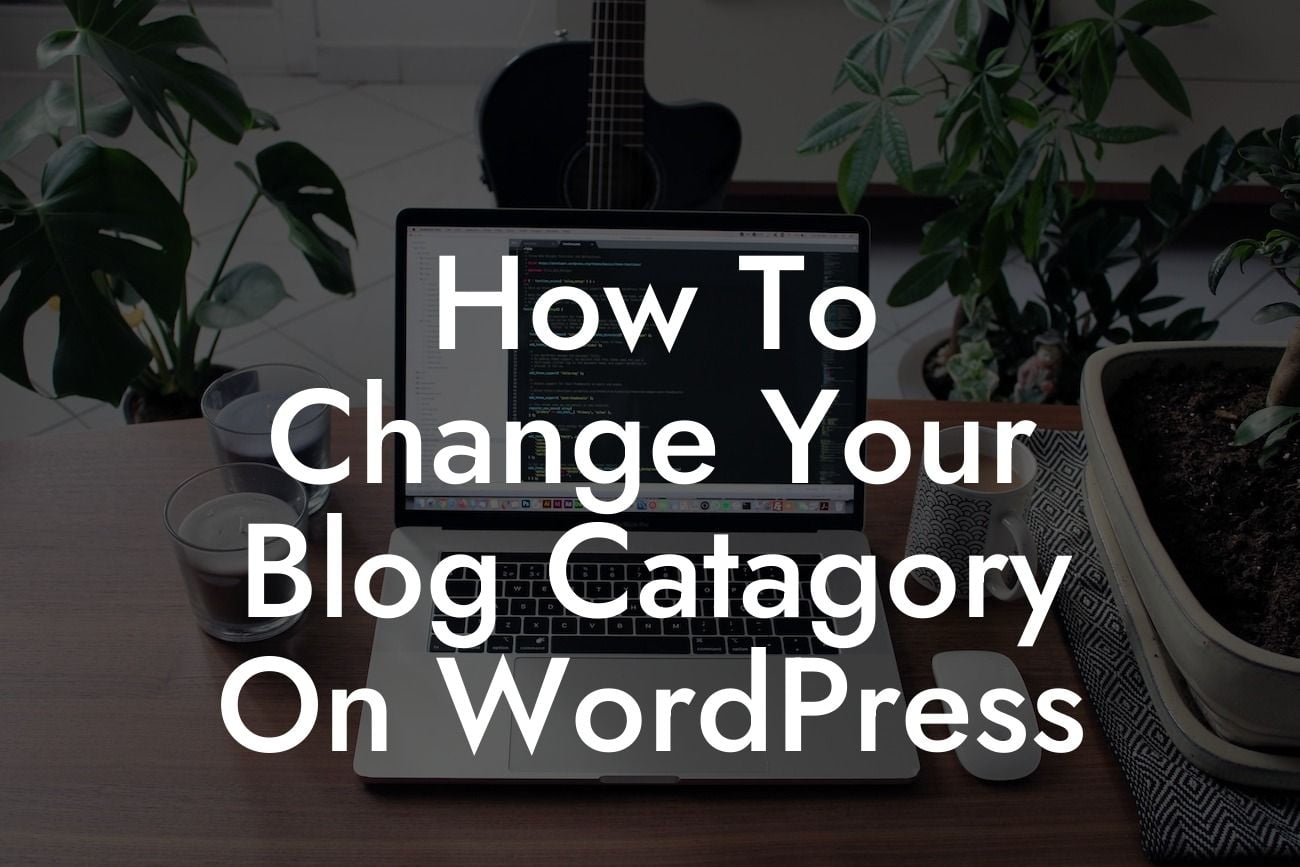Are you feeling stuck with your current blog category on WordPress? Maybe you want to reorganize your content or target a different audience. Don't worry, we've got you covered! In this guide, we will walk you through the process of changing your blog category on WordPress. Whether you are a small business owner or an entrepreneur, optimizing your website's categories can improve user experience, boost your search engine rankings, and ultimately contribute to your online success. So, let's dive in!
Changing your blog category on WordPress is easier than you might think. Follow these steps to ensure a smooth transition:
1. Backup your website: Before making any changes, it's crucial to backup your website. This ensures that you have a safe copy stored in case anything goes wrong during the process.
2. Evaluate your current categories: Take a close look at your existing categories and analyze their relevance and usefulness. Consider whether they align with your business goals and effectively organize your content for your target audience.
3. Plan your new categories: Based on your evaluation, determine the new categories that will better serve your website's purpose. Consider your content themes, your audience's interests, and your business objectives. Aim for a clear and logical structure that facilitates navigation and improves user experience.
Looking For a Custom QuickBook Integration?
4. Create new categories: Once you have a solid plan, it's time to create your new categories on WordPress. Simply go to your WordPress dashboard, navigate to "Posts" and then "Categories." Add the new categories one by one, ensuring accurate names and descriptions.
5. Edit existing posts: After creating your new categories, you'll need to edit your existing posts to assign them to the appropriate categories. You can do this manually or use bulk editing features to save time. Ensure consistency and thoroughness during this step to avoid misplaced posts.
6. Update permalinks and internal links: As you change your blog category, it's essential to update your permalinks and internal links to maintain the integrity of your website's structure. WordPress offers built-in tools to help you with this process, ensuring that your content remains accessible and user-friendly.
How To Change Your Blog Catagory On Wordpress Example:
To illustrate the process, let's say you run a fitness blog and decide to change your categories from "Strength Training" and "Cardio Workouts" to "Strength Workouts" and "High-Intensity Interval Training (HIIT)." Firstly, backup your website to ensure the safety of your existing content. Next, evaluate your current categories and decide if the new ones will better reflect your fitness niche and attract your target audience. Create the new categories and diligently assign your posts accordingly. As you update your permalinks and internal links, your readers can effortlessly navigate your new category structure, enhancing their experience on your website.
Congratulations! You've successfully learned how to change your blog category on WordPress. By optimizing your categories, you've taken a big step towards improving your website's user experience and search engine visibility. But remember, this is just the beginning. Explore our other insightful guides on DamnWoo to unlock further WordPress tips and tricks. And why not give our awesome WordPress plugins a try? They are specifically designed to supercharge your online presence and drive your success. So, don't settle for ordinary solutions – embrace the extraordinary with DamnWoo!













